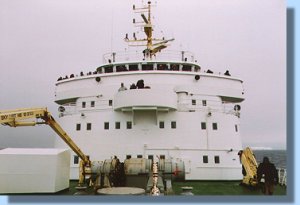
Once again we're in the vast open space of the Scotia Sea. An entire day of sailing lies ahead of us. Contrary to the days behind us, the weather is fine today. We decide to skip the morning lectures and instead go to the bridge hoping for some close encounters with whales.
Two hours later we still haven't seen any whales. But we do frequently see porpoising penguins and an occasional fur seal as well. The number of icebergs we pass is gradually increasing as our southern latitude increases. The temperature of the seawater decreases at the same time reading 2.8 ºC in the afternoon, not strange with the northern edge of the pack ice around the South Orkneys. Then we see our first whale today, a southern bottlenose whale.
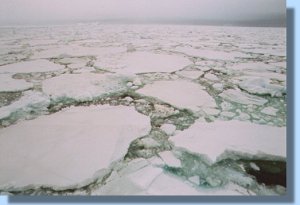
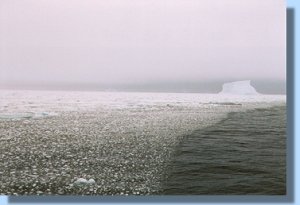
By the end of the afternoon clouds start covering the sky darkening our surroundings considerably. In the gray dusky light we suddenly notice a white line near the horizon. Approaching the white line it turns out to be the ice front. As far as our eyes can see, the sea is covered with ice floes, bergy bits, icebergs and huge tabulars. The ship vibrates when all the engines are switched to reverse and within a minute the Polar Star has come to a standstill only several tenths of meters away from the ice front.
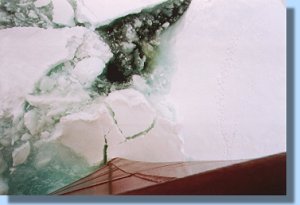
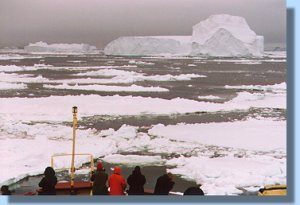
Calmly floating the captain assesses the condition of the ice. We can only hope that this doesn't prevent us from reaching the South Orkneys.
The the captain concludes that the Polar Star won't have a problem with this kind of pack ice. Full speed ahead we sail into the ice. Thin plates of ice are crushed under the ship's bow. Thicker plates give only slightly more resistance. Only the thickest plates (a few meters thick) don't break when the Polar Star sails into it but slowly turn away to the left or right while the Polar Star shakes and trembles.
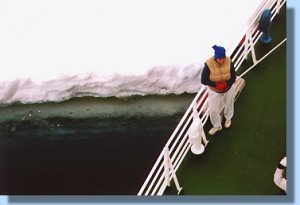 One very thick
plate of about 6-8 meters thickness withstands us for several minutes.
The engines roar and we almost come to a standstill but then this one gives away too.
What a spectacle! What a fun!
One very thick
plate of about 6-8 meters thickness withstands us for several minutes.
The engines roar and we almost come to a standstill but then this one gives away too.
What a spectacle! What a fun!
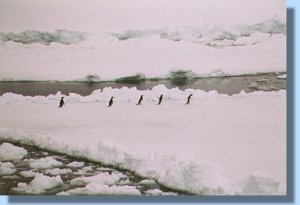
Many ice floes carry penguins. Their reaction to this huge red boat approaching them is the same all the time. They start running, quickly switch over to tobogganing and as soon as they can dive off the floe to safety. Rolls of film are being shot at high speed. The dinner is getting cold and we're warned that if we want to eat something we really have to hurry. Many people don't listen and stay outside. We have the fastest three-course dinner we've ever had and rush outside again where the fun continues.
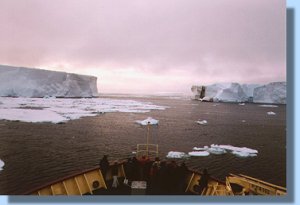
In the meantime we've reached Coronation Island in the South Orkneys and we sail along its coast. Our destination is Shingle Cove and we expect to arrive there around midnight. A bit too late for us! When dusk sets in around 10.30 we go to our cabin. The nights are already short enough.
During the night the ice breaking continues in our dreams.